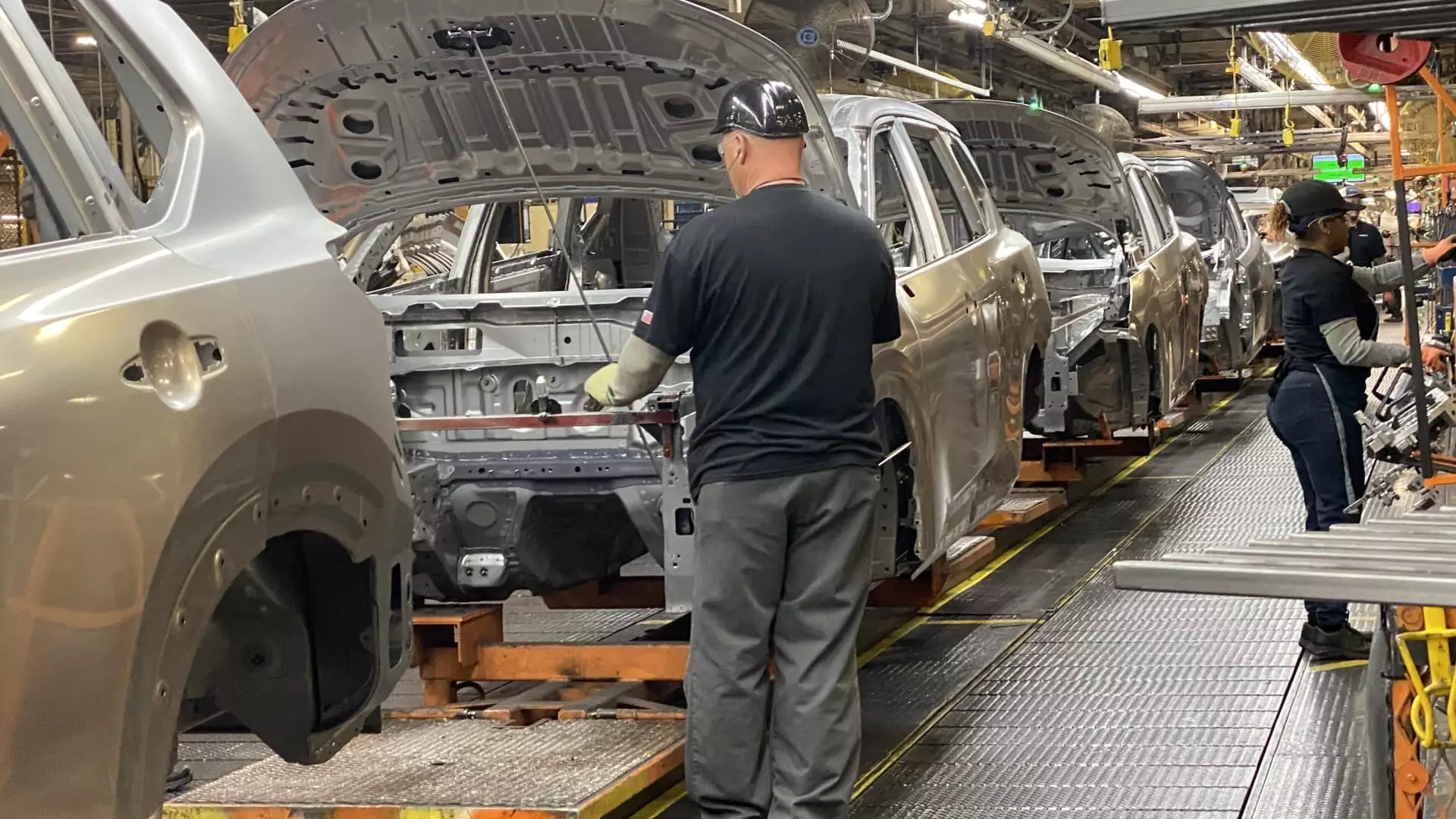The imposition of a 25% tariff on imported vehicles by President Donald Trump has ignited waves of turbulence within the automotive industry, and it’s not just a passing storm; it’s shaping up to be a fundamental shift that may reshape the entire sector for years to come. Analysts and experts forecast that this policy, aside from raising vehicle prices significantly, may lead to millions of fewer vehicle sales across North America, throwing the industry into a crisis only exacerbated by inflation and increasing consumer debt. As someone who considers themselves a pragmatic supporter of government intervention to protect domestic industries, the consequences of these tariffs prompt alarm over the strategic missteps of a country that should be advocating for competitive pricing and market stability.
Escalating Prices and Contracted Sales
The stark reality is that consumers are likely to pay dearly for these tariffs. Goldman Sachs predicts that the average cost of new vehicles will escalate by up to $4,000 due to tariffs, translating to less affordability and reduced purchasing power for the average American family. When the average new vehicle already hovers around $50,000, such an uptick becomes a significant hurdle to consumers. The expectation of increased prices invariably leads to decreased sales: analysts forecast a reduction of up to 2 million vehicles annually in the U.S. and Canada alone.
It’s baffling how decision-makers could ignore the economic ramifications of their actions. When consumers are burdened with higher costs, discretionary spending on cars—already a hefty expense—takes a backseat to basic needs. This is not just about vehicles; it’s about how this policy tightens the fiscal noose around American families—a clear departure from the principles of economic growth and stability.
The Impact on Automakers: Profitability at Risk
The effects of these tariffs stretch far beyond the showroom floor and into the hearts of automakers themselves. Research from the Boston Consulting Group indicates that the auto industry’s costs could balloon by an alarming $160 billion. American manufacturers like General Motors and Ford are finding themselves in a precarious situation where profit margins are squeezed tighter than ever. Despite being historically positioned as powerhouse brands, these companies may struggle to adapt to a new economic norm imposed by aggressive policies.
Interestingly, while some automakers try to absorb rising costs through innovative pricing strategies, others are simply unable to cope. For instance, Jaguar Land Rover has halted U.S. shipments in a desperate move to mitigate losses. This inability to find a balanced approach could lead to diminished competitiveness in a global market that thrives on efficiency and affordability. With the stakes this high, it’s disappointing to witness a lack of comprehensive strategies from industry leaders to counteract these financial pressures.
Consumer Sentiment: An Unsettling Shift
Consumer confidence has, by all indications, followed a disheartening trajectory. Amid fears of inflation, more people are tightening their wallets. The University of Michigan’s survey revealing the highest expected inflation since 1981 serves as a harsh wake-up call. Coupled with soaring auto loan rates, which have surpassed 9.64% for new vehicles and nearly 15% for used ones, it’s no wonder consumers are wrestling with hesitancy when it comes to purchasing decisions.
The combination of heightened vehicle prices alongside sky-high financing rates creates a chilling effect on the car-buying experience. A sector that previously thrived on robust sales is left grappling with dwindling numbers as economic realities become harder to ignore. As much as policymakers argue that the tariffs are meant to protect U.S. jobs, the immediate counteraction appears to be a jarring setback rather than a safeguard.
The Broader Economic Consequences
Many may overlook the fact that these auto tariffs hold the potential to inflict wider-ranging effects beyond the automotive sector. An estimated reduction of 2 million vehicle sales translates to serious economic ripple effects across various industries, signaling a decline in jobs, wages, and consumer spending. Companies that rely on automotive sales—from parts suppliers to service stations—will anticipate sandbags rather than buoyancy amidst this storm.
It warrants consideration that what may have initially seemed like a strategy for reinforcing American manufacturing is slowly evolving into a policy framework that erodes the very foundation it aimed to protect. Without the nimbleness to pivot and innovate, an entire industry risks becoming obsolete.
In Pursuit of Sustainable Recovery
In light of the challenges posed by the tariffs, the industry urgently requires introspection, where fresh initiatives can replace stubborn adherence to ineffective policies. Automakers and policymakers need to collaborate on solutions that prioritize economic sustainability, competitive pricing, and innovation. Rather than seeking short-term protection through tariffs, a more conducive path may involve investing in technology, infrastructure, and education that drive long-term changes in the automotive landscape.
It’s essential for stakeholders at all levels to realize that an era of collaborative growth is more beneficial than isolationist strategies. The automotive industry stands at a crossroads, and its navigation through this turbulent period will determine not just its survival but also its evolution into the future.

